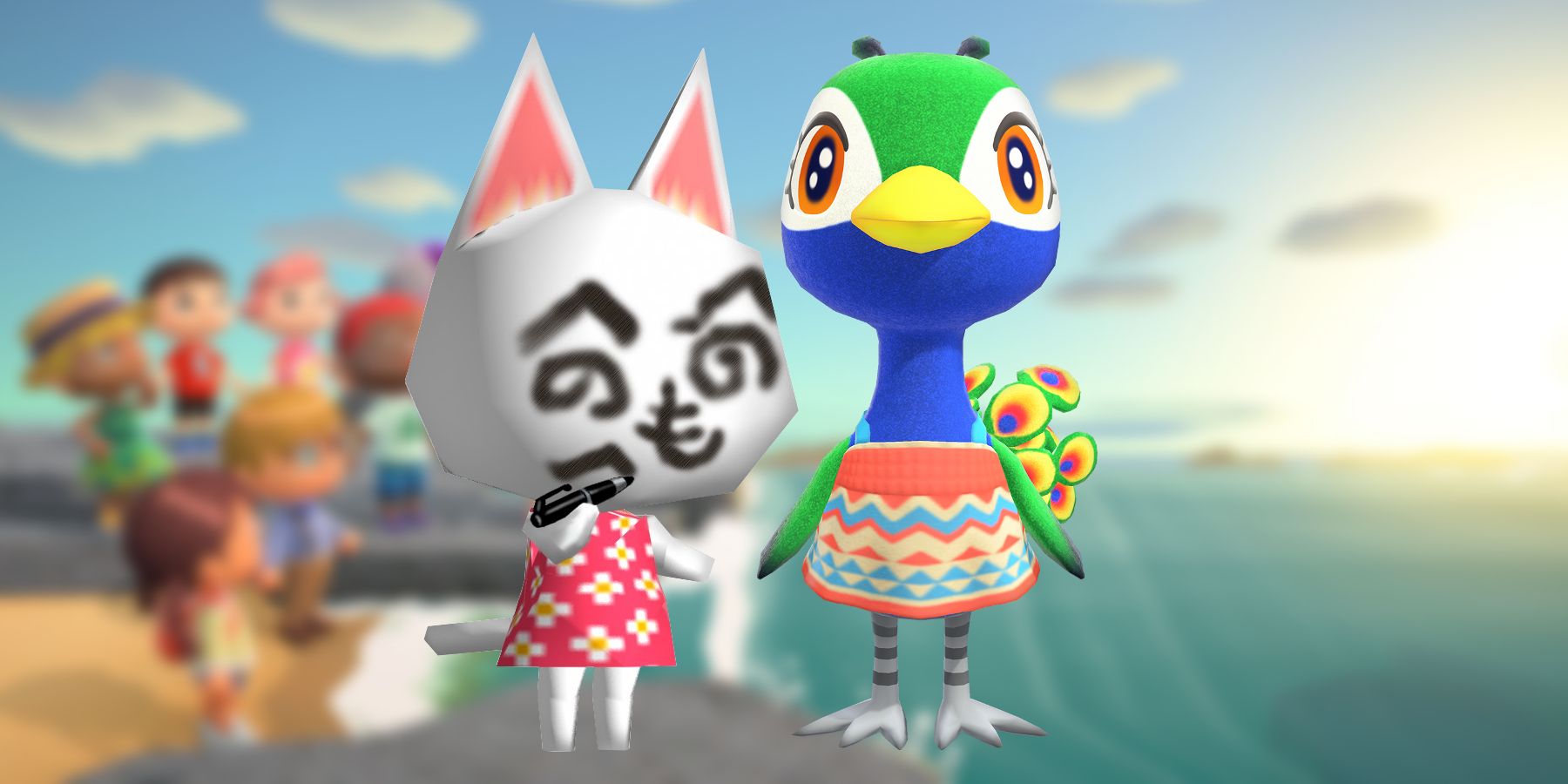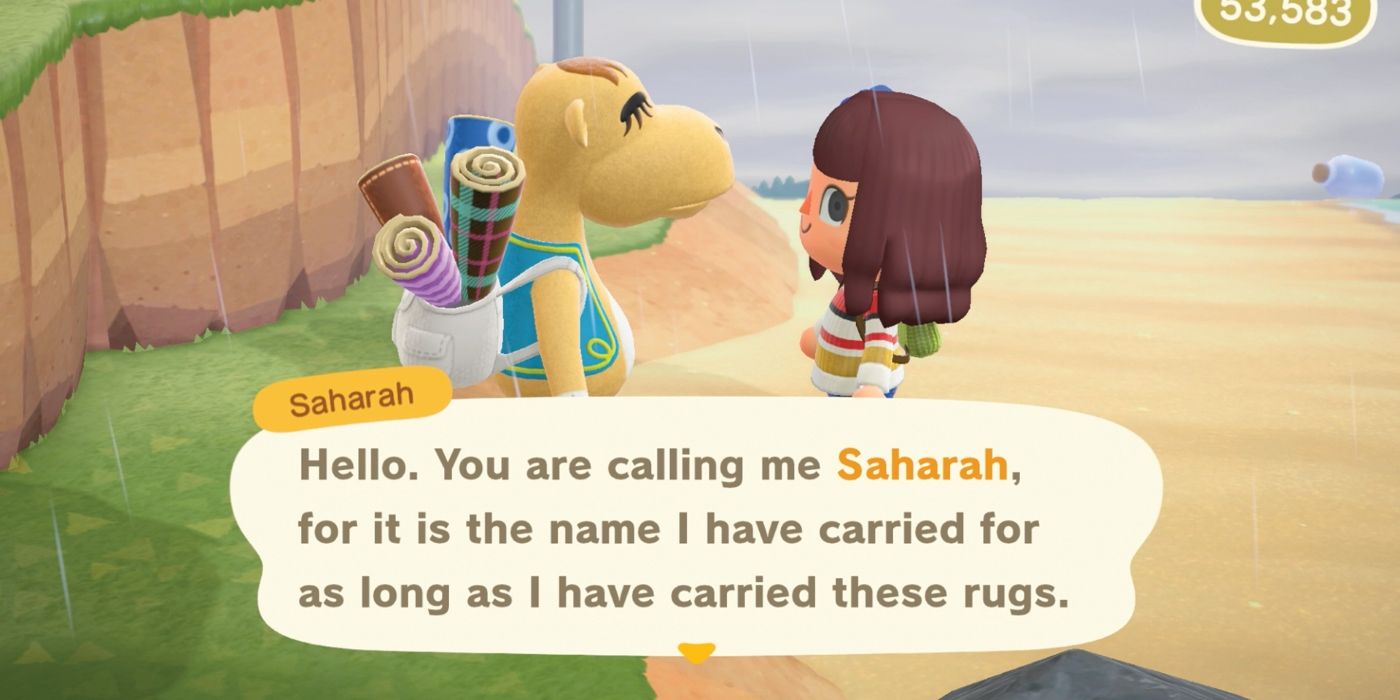The villagers of Animal Crossing are part of what attracts so many to the series, with an array of personalities and styles present. While some players enjoy the humor from smug and snooty villagers, others prefer the coziness brought by lazy and sisterly Animal Crossing villagers. Everyone has their favorites as well, and sometimes, players will notice odd facts or come up with theories about some of the villagers in the Animal Crossing series.
Some players believe that there are transgender Animal Crossing villagers. There's little evidence to show that Nintendo is supportive of trans rights, though players were happy to see the lack of outright player genders in Animal Crossing: New Horizons. However, it's possible that at least a couple of characters that are canonically transgender were slipped into the cast as a sign of support. At the very least, they could be symbolic of gender transitioning.
Julia, Papi, and Robin
Julia the peacock is perhaps the most prominent example of a possible trans character in Animal Crossing. She's canonically referred to with feminine pronouns, but her coloration matches that of a male peacock, which sport bright blue feathers and a colorful tail for mating, rather than a peahen. Additionally, in New Horizons, she wears a zigzag-print dress in the colors of the trans flag. However, it's worth noting that the bird with this specific shape (such as Blanche and Phoebe) are officially listed as ostriches, though it's clear that Julia is based on a peacock just as Phoebe is styled after a phoenix.
Similarly, Papi is a horse villager styled to look like an okapi (this is known to be canon as his name in the Japanese version of the series is Okappi. Male okapis can be identified by their horns, while females may only have little bumps, and Papi does not possess any horns, though he uses masculine pronouns. This could be to avoid having to change the shape of the horse model, however, Julian is a horse villager who resembles a unicorn and was given a white horn on the top of his head.
Finally, Robin is a bird villager who uses feminine pronouns, but, like Julia, players believe that she has a coloration more closely resembling a male robin. However, robins' sexes are much more difficult to identify in real life and can vary greatly, and it's possible that Nintendo simply took the most iconic colors and pattern into consideration when designing her.
Gracie, Sahara, and Blanca
The NPCs Gracie and Sahara as well as the villager Blanca are a bit different as they don't have characteristics of certain sexes like the above examples. Instead, they are the only three characters to have changed genders in localized versions of the Animal Crossing series. Gracie, a celebrity fashion designer, was originally male in the Japanese versions of the game, but possibly due to their effeminate nature, they were given feminine pronouns in the localized versions. It seems clear, though, that Gracie's original design was meant to be stereotypically gay.
Likewise, Sahara was also originally written as a male character but was changed to female in the international versions of the game. Regardless of whether or not they have any attributes of specific sexes like Julia and Papi, many queer Animal Crossing fans have happily taken them as LGBTQ+ symbols by the community.
Originally missing from New Horizons but added during the 2.0 update, Blanca might be the oddest case. Like both Sahara and Gracie, Blanca's gender was changed during the localization process, originally being written with masculine pronouns but later given feminine pronouns in the international games. What makes Blanca unique is their blank face that players can draw on, and some have taken this to mean that Blanca is a genderless blank slate, or nonbinary.
Of course, most Animal Crossing characters have colors that simply aren't realistic. Pietro looks like a rainbow and Ketchup looks like a tomato, though other villagers do have more realistic colorings, this could mean that Julia having an unrealistic coloration for a ____ peacock doesn't make her transgender, and the same goes for Papi's lack of horns. If they are intentional, though, it's a nice subtle tribute to the trans community.
Animal Crossing: New Horizons is out now for Nintendo Switch.


